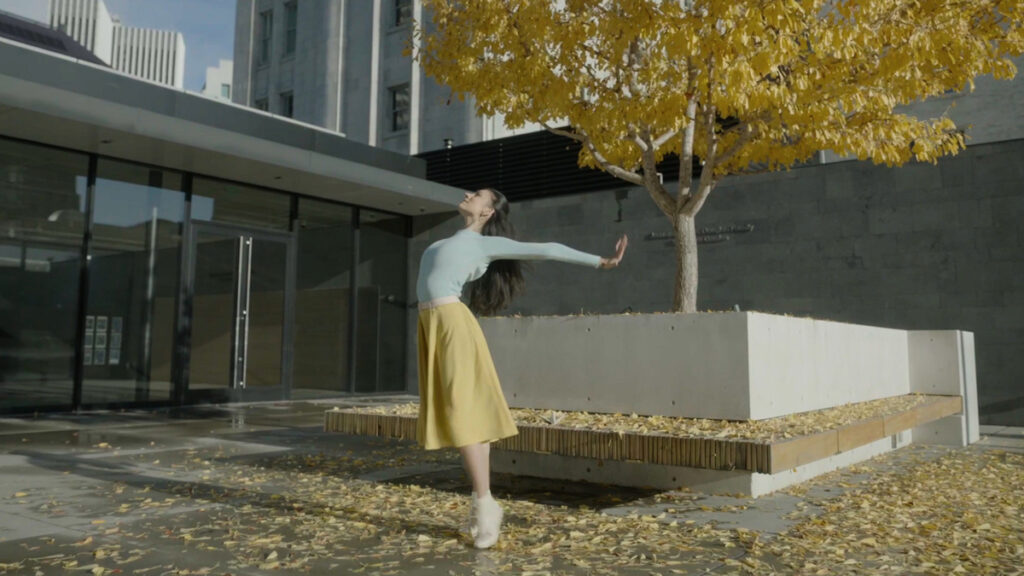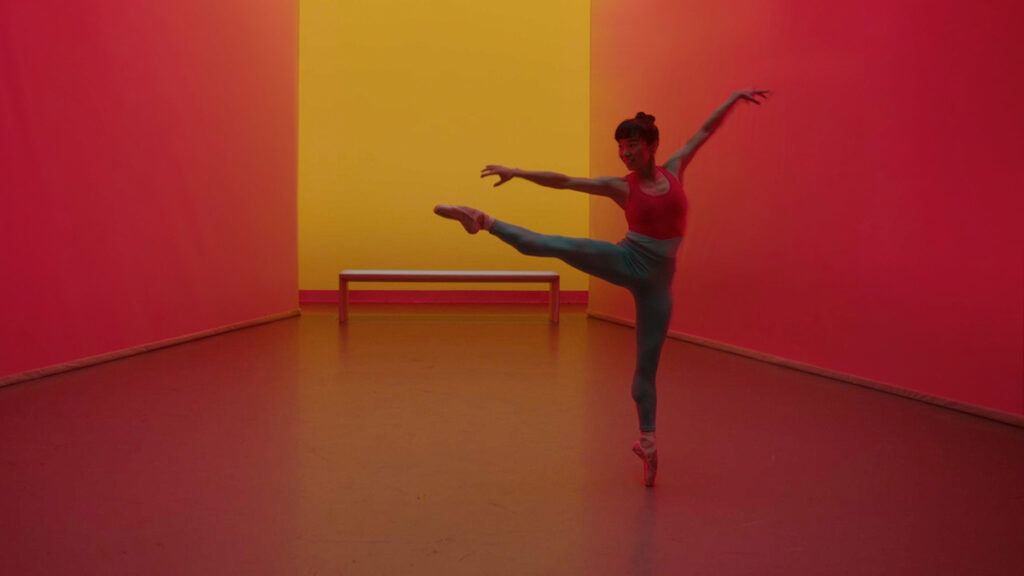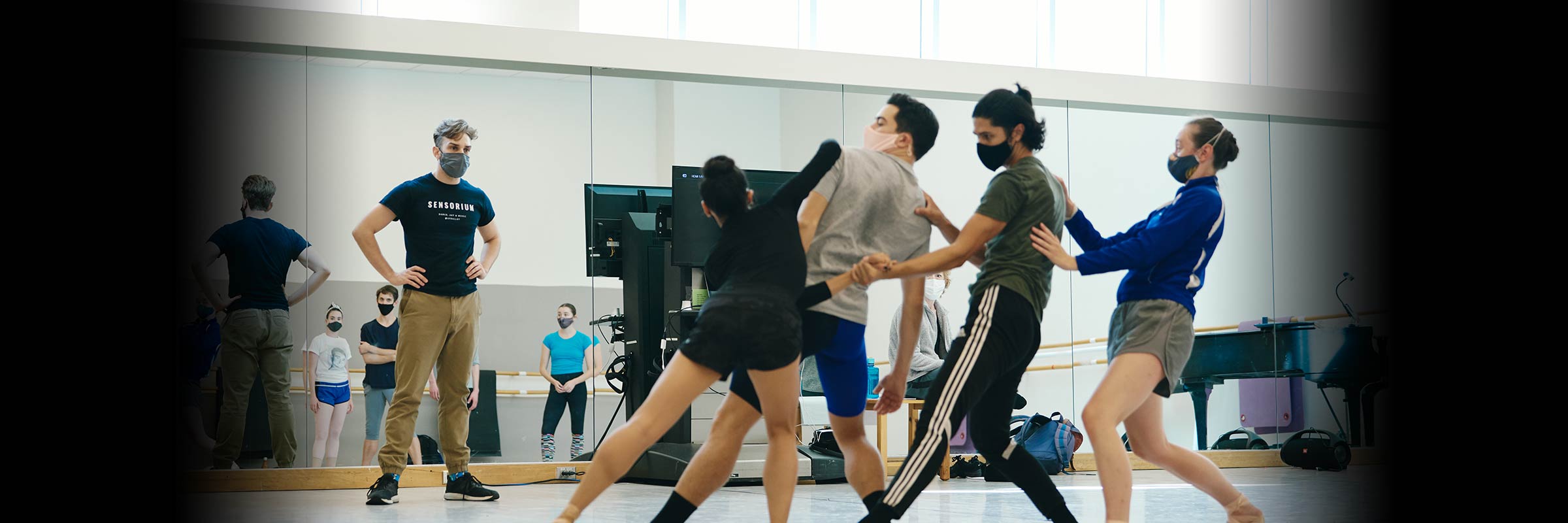Myles Thatcher Q&A
Marrying Visual Art, Film, and Movement
Myles Thatcher’s COLORFORMS, created for the 2021 Digital Season, was filmed in several locations, including the galleries of SFMOMA. Like many of his previous works, his latest ballet explores themes of community and celebrates brilliant, dynamic movement.
What was your inspiration for this piece?
My starting point was Alexander Calder’s mid-century mobile, which speaks so kinetically; it’s movement in visual art. That work got me thinking about where we are today, and how everything we do affects everyone else. I loved the sense of asymmetry, with pieces connected by an unseen force. If you move one, it affects them all. To me, that was poignant right now.

How did the idea of filming at SFMOMA come about?
It’s a very specific time for both art forms and institutions. Now that we don’t have physical spaces to invite people into, it’s even tougher to connect. But it’s also fast-forwarded what we already had on our radar—how to better connect with people and not only bring people in, but step outside of ourselves and approach the community in a different way. Those are the lofty themes. At the same time, I’ve also kept in mind that we’re in a time when people need art to provide joy and pleasure.
The film alternates between dancers in real-world spaces and pure dance scenes. Why?
One thing I was really adamant about was celebrating the heart of what we do as a company, but also grounding it in reality in some way. A challenge with dance and film is that to use our ballet technique, we need the right floor and conditions, and those don’t often overlap with the real world. So the film has these parallels of dancers being in more realistic pedestrian places, then they’re swept into this hyper-distorted reality that feels more liberated and artistic, and less bound by day-to-day life.

What drew you to the music?
What I love about this piece of music by Steve Reich is that it’s built in these sub-chapters. It’ll have seven repeats and then it will shift, and it keeps building on itself. All of these little capsules and shifts are the perfect way to give impetus for change. That’s something that is super important in a dance film.
What else has been different in choreographing for film versus the stage?
It’s a different animal. Learning about how to translate our very specific craft of working for stage to film has been interesting. You always have to have the [camera] frame in mind. And there’s a specificity that’s not achievable through stage work. In the theater, you cannot demand that people focus on something. You can encourage them that way, but they’ll be looking where they want to look, which for me is something really magical about the theater. But you gain something in film; you can reach different people and tell a story in a different way. It’s a different way to use your imagination, and I’m happy to be getting that experience.
This was part of the 2023 Season.
Header Image: San Francisco Ballet rehearsing Myles Thatcher’s COLORFORMS // © Erik Tomasson



